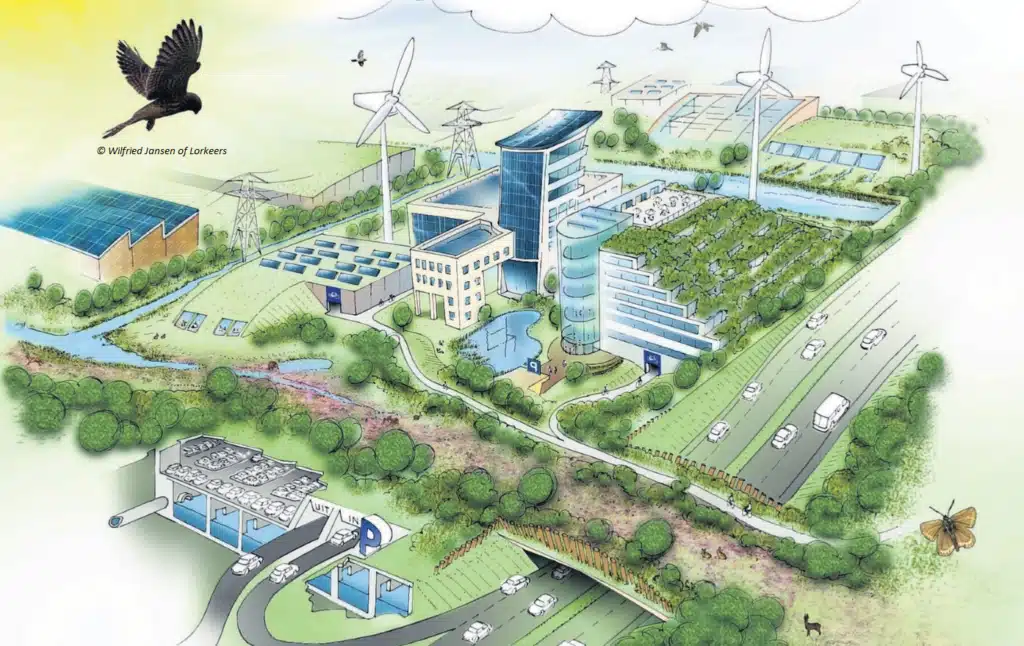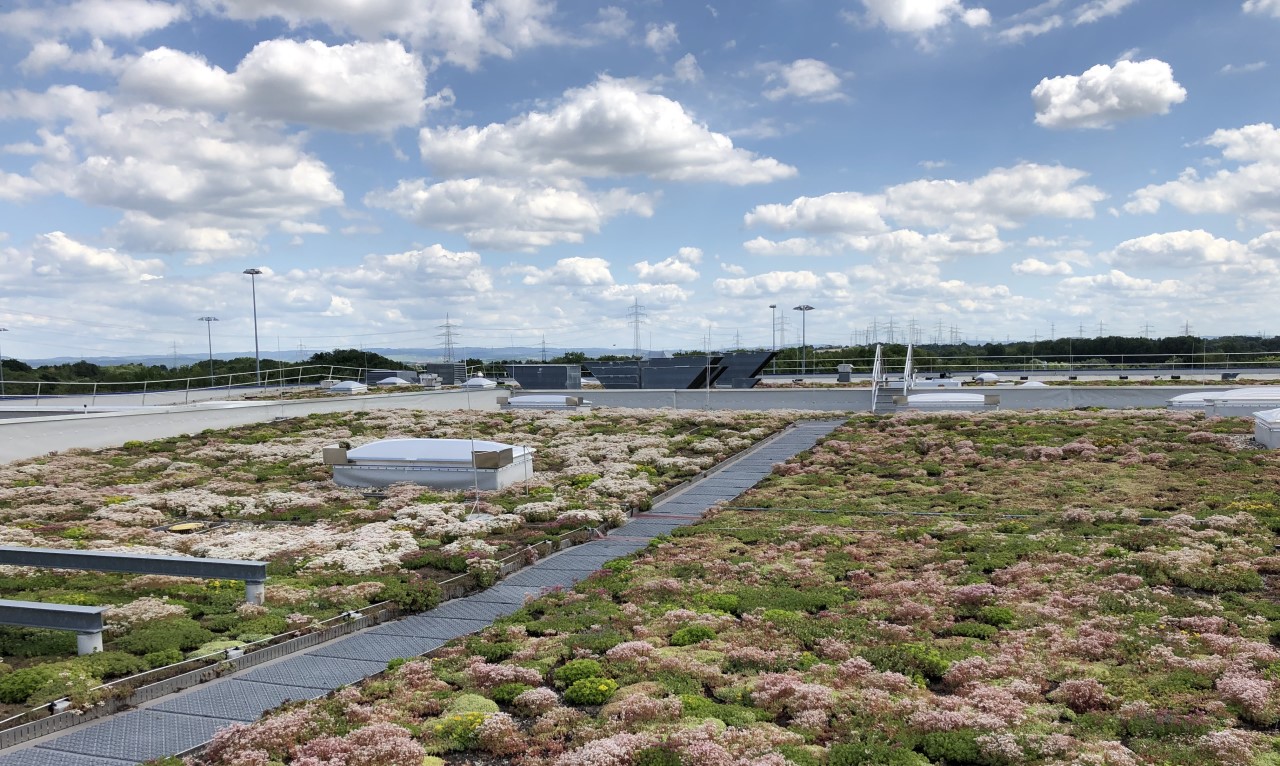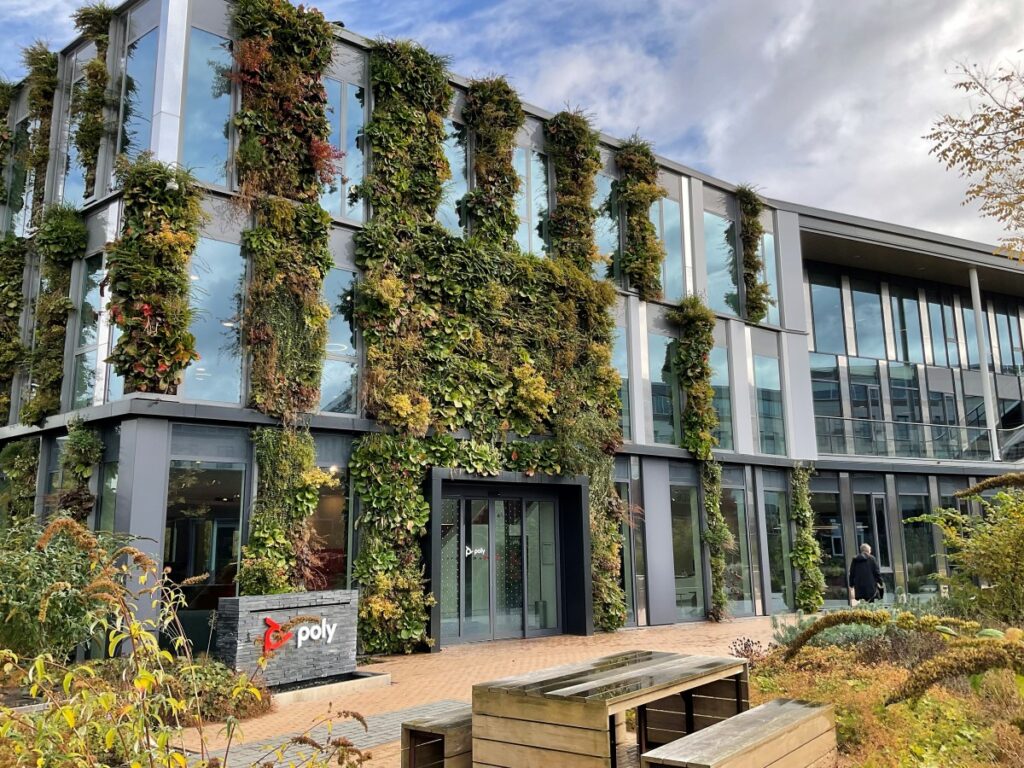Climate-proof business parks – goodbye concrete desert, hello green opulence
Posted on Thursday 19 January, 2023It is too hot or too wet, and the view is often dreary. Many industrial estates and office parks are grey and unattractive. This is surprising, because the sites are used intensively and a big part of the working population spends their time there day in and day out. These 'concrete deserts' are often outdated and in dire need of climate adaptation. Fortunately, change is coming.
From efficient to future-oriented
We are increasingly experiencing negative consequences of climate change, such as heat stress, flooding and loss of biodiversity. It also leads to economic damage, which will only increase if we do not act now. That is why cities are already taking measures regarding climate adaptation. As it turns out, a lot can be gained by greening industrial estates. These business parks are designed purely with a view to efficiency and accessibility, without considering the quality of life for employees and animals. They are often petrified areas with little greenery, large amounts of asphalt, concrete blocks and flat roofs. Research even shows that industrial estates are the hottest places of a country.1
Ironically, these sites also often suffer from flooding. But not only that. The biodiversity is poor and it is not a pleasant work environment, although people do spend a large part of their time here. And since these sites cover a large surface of the built environment – for example more than one sixth in the Netherlands1 and 18% in Germany2 – any positive change will have a major impact.

Photo credits: Wilfried Jansen of Lorkeers - Source: IVN Natuur Educatie
Business parks, the hotspots of a country
The main cause of the above problems is the petrification of the business park area. Concrete areas are much hotter on warm days than places with a lot of greenery. This leads to a heat island effect, that can cause heat stress for both people and animals in the area. If nothing changes within the next thirty years, the average perceived temperature on a summer day at a business park could rise to 40.8 degrees Celsius.3 Due to the heat, air conditioners will have to work harder, and they will consume more energy as a result.
Heat stress maps provide a quick insight into urban 'hotspots'. Here are some examples of these maps:
The petrification can also cause flooding, because sewers overflow during heavy rainfall. Rainwater cannot run off because the soil mainly consists of concrete, stone and asphalt. And because industrial estates are still growing, the habitat of plants and animals is reducing rapidly. The sites also block the migration routes of many animals, which is also detrimental to biodiversity in the region. And that is worrying, because there is an average of 69% decline in wildlife populations around the world. Without biodiversity and healthy ecosystems, there will be tremendous food and drinking water scarcity in the future. Sustainability and greening actively is of great importance. Therefore, adjustments should be made right now with a view to the future.
 Reduce heat stress by applying a green roof, as here on the IKEA building in Ludwigsburg, Germany
Reduce heat stress by applying a green roof, as here on the IKEA building in Ludwigsburg, Germany
Climate-smart business park
We have good news in that respect: industrial estates are very suitable for biodiversity measures. They are located between urban areas and the countryside. This allows them to provide habitat for, and even proliferate, both urban and rural flora and fauna. They also form a good corridor from one habitat to another. It is comparable to a wildlife bridge over the highway, but for birds and insects and small creatures, instead of big animals such as deer. Finally, there is often a combination of fallow areas that are suited for pioneer species and permanent green structures for permanent plant species.3
This is excellent, because greenery has many more benefits in addition to improving biodiversity, especially for the people who work there3:
- A green working environment reduces stress and a view of greenery even increases concentration.
- Plants purify the air so that people inhale less particulate matter, more oxygen is released into the air and CO2 is captured.
- Greenery has a cooling effect. On hot summer days, the temperature difference between the city and the countryside can be as much as 7⁰C.
- Greenery ensures that rainwater can run off and/or is temporarily stored (water buffer).
- Greenery creates a more attractive environment for companies, for instance with a Corporate Social Responsibility strategy, to establish themselves on the business park.
- In addition, the value of the property will also increase due to greenery and companies can receive tax benefits when they green their building.
Finally, a beautiful green business park is a real calling card for visitors. A good example of a climate-proof business park is Park 20|20 in Hoofddorp, the Netherlands, which is built based on the Cradle-to-Cradle philosophy. A lot of greenery can be found here, both on and surrounding the buildings. Have a look at this business park in summer:
From grey to green
But how to go about greening? Business parks have a big advantage here. One of the problems faced by people in the city is a lack of space (and they therefore must make difficult choices). Industrial estates on the other hand often have a lot of space to install all kinds of green solutions. When one thinks of greening, usually one first thinks of adding plants, trees and shrubs. The more greenery is implemented, the cooler the ambient temperature will be. Greenery often also has a sound-dampening effect. Ditches, ponds, bioswales and permeable parking spaces are good options for natural water storage. Flower meadows also provide water drainage and are an important source of food for insects. In addition, it is a very attractive environment to walk along, during lunch breaks for example.
The buildings themselves can also be greened, using green facades and green roofs. These solutions also provide additional benefits. In more and more countries it is mandatory to install solar panels on new and/or renovated buildings. If solar panels are installed in combination with a green roof, they will generate an extra amount of energy of at least 6%.4 In addition, green roofs act as a rainwater buffer (also in the form of Retention and Detention Roofs) against flooding, provide a home for birds and insects and have a cooling effect inside the building.
Living walls have a heat-reducing effect as well. For the indoor climate, this means that the air conditioning has to work 33% less hard. This in turn leads to energy savings. In addition, a commercial building loses 30% less heat when a green facade is installed.5 And the natural air-purifying effect of plants ensures that the air quality is considerably improved. Finally, green walls also contribute to biodiversity and sound insulation in the area. If a living wall is also installed inside the building, this will have important advantages for the employees.
Both the installation of green roofs and green walls contribute to BREEAM and LEED certifications. They also help companies in reaching their Sustainable Development Goals.
 A green facade not only ensures a pleasant working area and a better environment, but also looks beautiful
A green facade not only ensures a pleasant working area and a better environment, but also looks beautiful
Government funding
In order to make business parks greener, several important things need to happen. Fortunately, the more and more countries offer fundings, to make this happen. Check your local government or council website to see if your project is eligible for government funding.
More information about greening business parks
Looking for more information about greening your office building? Please contact our experts. They will gladly help you!
Sources:
- https://www.tijdelijkenatuur.nl/Uploaded_files/Zelf/20200318-tn-brochure.80eeda.pdf
- https://aktion-flaeche.de/flaechensparende-industrie-und-gewerbeentwicklung
- https://stadszaken.nl/artikel/1761/wonen-op-bedrijfsterreinen-te-heet
- https://www.interpolis.nl/magazine/wonen/een-groen-dak-en-zonnepanelen-wat-levert-het-op
- https://www.plymouth.ac.uk/news/living-walls-can-reduce-heat-lost-from-buildings-by-over-30-study-shows
